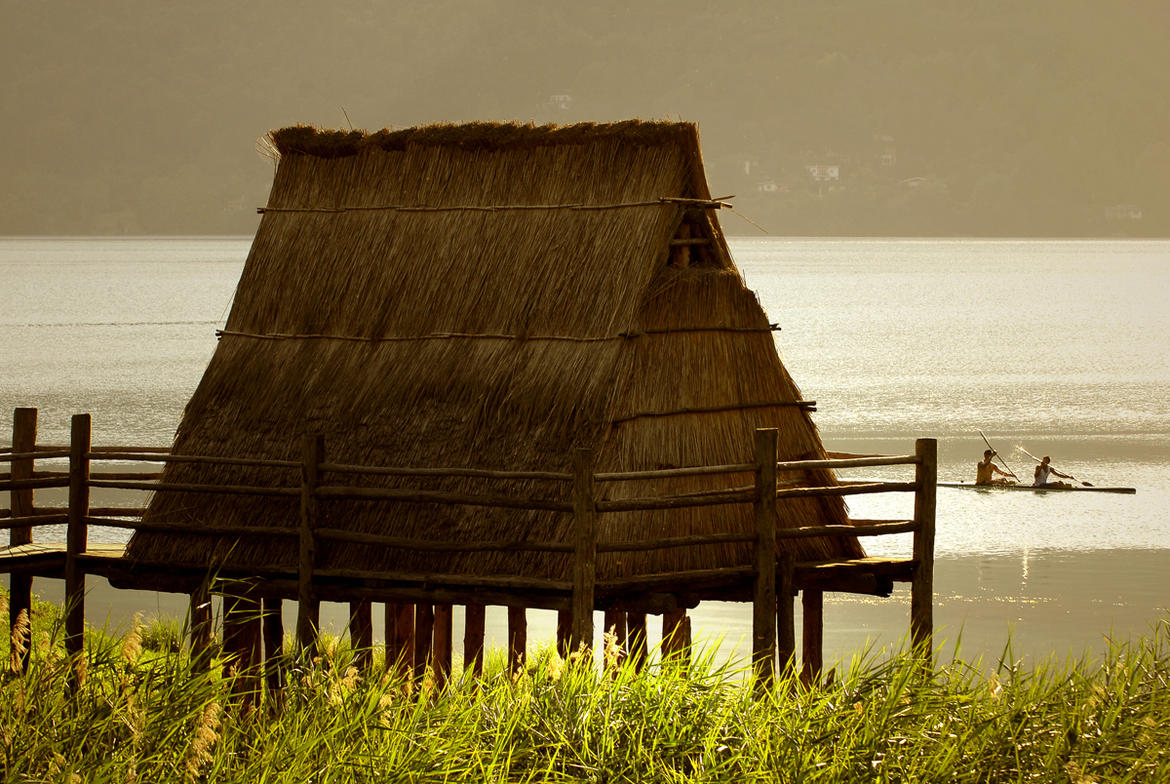Museum of Pile dwellings of Ledro Lake
Facing the most renowned Pile Dwelling settlement of the Alpine area, the Museum houses notable archaeology collections and carries out year-round research programs in “imitative archaeology”. In “imitative archaeology”, also referred to as “experimental archaeology”, researchers imitate historical processes and recreate settlements for the purpose of practically testing theories of ancient human behaviour. The museum offers numerous educational activities.

The Pile Dwelling Museum is located on the shore of Lake Ledro, adjacent to the archaeological site. It preserves the exquisite handicrafts of one of the most important villages of the Bronze Age in the Alps and it has been proclaimed by UNESCO World Heritage Site. Facing the most renowned Pile Dwelling settlement of the Alpine area, the Museum houses notable archaeology collections and carries out year-round research programs in “imitative archaeology” .
A reference center for Bronze Age scholars and for archaeology amateurs, the Museum holdings are comprised of a series of artifacts discovered in the Pile Dwelling site, on the bank of enchanting Lake Ledro.
In 1929, the water withdrawal for hydroelectric purposes determined a marked lowering of the lake level. A pile dwelling village emerged, and it turned out to be one of the most important Bronze Age settlements within the whole Alpine area.
An on-site Museum was established in the late 60s, to preserve the precious artifacts that were discovered in the settlement.
Today, visiting the archaeological site is a thoroughly unique and mesmerizing experience – one that, against the background of the pile dwelling remains, gives visitors a sense of what the prehistoric environment was like.
The museum offers numerous educational activities. Adults and children will enjoy spending some time at the Archeo Lab, a portion of the Museum dedicated to environmental-ecological education. Here, thanks to the recreated settlement, visitors will try their skills in the daily chores of Bronze Age people: making bread with the village shaman, molding clay and working wood, spinning and weaving on the handloom, and many others.
In “imitative archaeology”, also referred to as “experimental archaeology”, researchers imitate historical processes and recreate settlements for the purpose of practically testing theories of ancient human behaviour.
Notes on the accessibility to the site
Free admission for visitors with disabilities and their companions.
After the indicated ramp, there is a 120 cm wide pedestrian gate. The access to the external stilt house is via one ramp and a 4 cm high step. In the wheelchair accessible toilets, there is a grab bar, the toilet bowl is installed on a raised platform (10 cm from the floor) and the clear space between wc and washbasin is 40 cm.
Information collected by the staff of the Cooperative Handicrea




